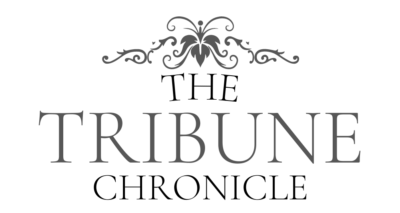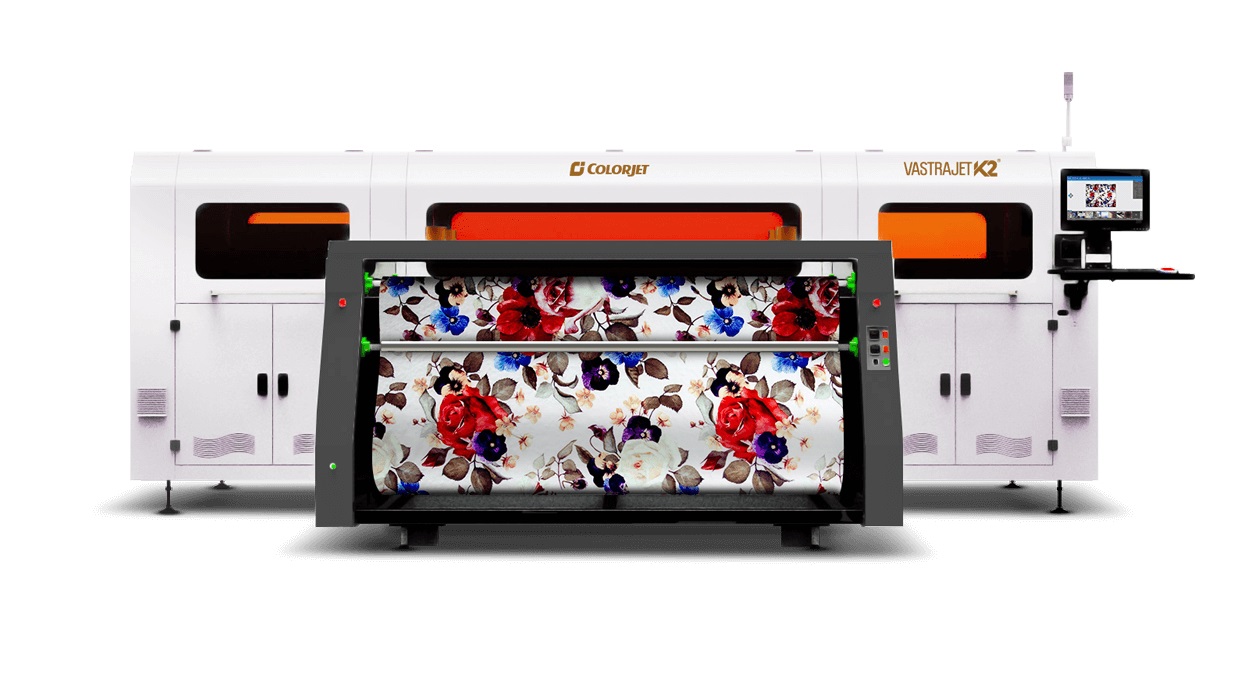In this course, you will learn about the technology requirements of digital textile applications. Specifically, you will learn about the necessary ink chemistries used in inkjet printheads. You will also explore pre-processing requirements. Integration of inkjet technology and the challenges of inkjet system design will also be discussed. Finally, you will learn how to choose a digital textile printer based on your budget and printing requirements.
Digital Textile Printing Process
The process of digital textile printing starts with designing an image. To create a digital textile design, graphic designers use programs such as Adobe Photoshop or Illustrator. They use the CYMK color model for basic colors. Designers export the artwork in TIFF format to be printed. This file type is larger than JPEG files, but maintains the quality of the artwork. Digital artwork is also scanned and converted to a digital format. This allows the design to be repeated multiple times on the fabric without seams or borders.
This process offers many advantages for manufacturers, especially for home furnishings and apparel. It can produce more colors than a traditional printing process, and is less expensive overall. Moreover, it can also be used for a variety of purposes. The only major drawback to this process is its limited use and lack of photo-realism. However, if used appropriately, digital textile printing is a good choice for many applications. It can be used for home furnishing and apparel and is considered the next generation of printing.
Global digital textile printing market is worth $2.2 billion in 2019 and is projected to grow to $8.8 billion by 2027. The process uses various types of colorants and is used to print on both small and large-scale textile rolls. Digital textile printing is used for home goods, fashion goods, and apparel. By 2027, it will be the fastest-growing market for digital textile printing. The future of the digital textile printing market is bright and full of promise. So, get ready to take advantage of this opportunity.
There are four basic types of ink used in digital textile printing. Table 1 shows the different types of inks and fabrics that can be printed on. Table 2 lists examples of colorants and their modes of attachment to fabrics. While the process is fast-growing, not all types of inks are available in every printer system. So, the right printer system is key to successful digital textile printing. There are numerous advantages to digital textile printing.
Best Digital Textile Printer
Monna Lisa Evo Tre is a new model of digital textile printer. Designed for the fast-paced market and varied demands, this printer offers exceptional print quality. Among other things, it is easy to use, saves ink and provides fast printing time. It is available in many color combinations and supports up to eight colors. Moreover, it is suitable for printing on cotton and other materials. Besides, it is also compatible with a variety of printer inks.
Digital printing technology is not perfect. However, if you want to use it for different applications, you can choose any of the many types of printers available in the market. The print head quality of the machines varies as well. Epson print heads are known to provide high-quality sharpness, whereas Konica Minolta print heads are noted for distort. So, you must know the specifications of your production before buying a digital textile printer. Also, consider your budget and your desired output.
Veekay is one of the best digital textile printer manufacturers in Orissa. It offers a variety of specifications, including UV-resistant printing. It is the best printer for the textile industry. You can also find it in different color options. You can choose from four or eight colors, as per your requirement. And the best thing is that it is easy to use and maintain. You can buy it at a good price too! There are many types and models of these printers to choose from.
Direct printing is another option. With this method, the print head moves from left to right over the fabric. This makes it possible to print a large area of the textile. Then, you can upload your design to the printer. This will only take a few seconds. If you want to print multiple colours, you need a higher-quality digital textile printer with an advanced colour management system. It is also important to keep in mind that this process can be expensive.
Colorjet Textile Printer
The Colorjet Digital Textile Printer is an industrial strength printer that produces high-quality prints on textiles. Its advanced features allow it to print on both natural and synthetic fabrics. Its unique 3E design philosophy maximizes the capabilities and applications of the machine. Its advanced technology produces high-quality prints with exceptional precision and speed. The printer is easy to use and maintain with appropriate cleaners and lubricants. Colorjet Digital Textile Printer is an ideal choice for textile printing companies, as it offers a cost-effective solution to large production volumes.
The ColorJet Group is the largest manufacturer of Digital Textile Printers in India. The company operates from two manufacturing facilities in India and China and seven sales offices in seven countries. It has installed over 4,000 printing solutions in over 450 cities worldwide. The company is driven by a highly professional 278-member team, which includes more than 100 employees in the technology and R&D functions. These professionals are instrumental in ensuring the success of ColorJet Digital Textile Printers.
The ColorJet Digital Textile Printers offer superior performance, increased productivity and superior printing accuracy. This printer offers a 16-head digital textile printer that delivers outstanding performance, superior accuracy and low energy consumption. The company’s advanced AiS (Adaptive Ink System) technology enables customers to choose the ink that matches their business needs. With an initial investment of $59,000, the ColorJet Digital Textile Printer is an excellent investment for your textile production.
The Digital Textile Printer is the latest innovation in textile printing. It offers competitive Total Cost of Ownership and millions of colour options. With millions of colours to choose from, the Colorjet Digital Textile Printer offers a unique design each and every time. The Digital Fabric Printer is designed for direct printing on synthetic and natural fabrics. It combines advanced technology with Indian engineering to provide you with a high-quality product that is both stylish and durable.
Vastrajet
The VASTRAJET is an industrial-grade direct textile printer designed for direct digital printing on synthetic and natural fabrics. It offers high precision and high quality output, with the flexibility to choose from eight-colour and four-colour drop sizes. The industrial-grade inkjet assembly and modular design of the machine makes it ideal for industrial conditions. Among its benefits are its ease of use and low running costs. A number of other benefits include reduced ink consumption and durability. The Vastrajet is perfect for high-volume production, short runs, and embroidery work.
The ColorJet METRO digital textile printing machine offers a 1.8-meter-wide print area. It uses latest technology and efficient engineering to produce high-quality prints on fabrics. The machine is compatible with all kinds of inks. It prints on fabrics with thickness ranging from 0.1 to 30 mm. Its wide range of inks allows it to print on a variety of fabrics, including cotton, polyester, silk, viscose, nylon, and acetate.
ColorJet’s Metro-8166 high-speed digital textile printer delivers industrial-grade production at speeds up to 294 square meters per hour. The Vastrajet(r)-8164 is equipped with AIVC (automatic ink volume control) technology, which ensures consistent print quality even under varied environmental conditions. ColorJet India Ltd is one of the leading manufacturers of wide format digital printers in India, with 34% market share in the country.
With a high-performance Vastrajet digital textile printer, you can quickly produce beautiful apparel and fabrics in a wide range of colors. And it is eco-friendly too, with several features that help reduce its carbon footprint. And its innovative, eco-friendly design is another plus point. The Vastrajet 8164 is one of the fastest digital textile printers on the market, making it a great choice for many types of businesses.
SubliXpress
The SubliXpress is a high-speed, industrial grade sublimation printer that can print on a variety of fabrics. The machine can print on t-shirts, fabrics, signs, and more. Its TST technology provides superior jetting and a durable carriage that requires little maintenance. It also features a powerful variable vacuum bed. It is built with a sturdy aluminium frame that eliminates vibration and ensures a long life.
The SubliXpress Plus features a 1.8 metre printing width and eight Kyocera print heads that produce variable drop sizes for crisp, even prints. The SubliXpress Plus also features patented AST TM technology, which reduces printing costs while ensuring high print quality. The SubliXpress is a high-speed industrial dye-sublimation printer that produces a variety of products.
The ColorJet SubliXpress Plus features eight staggered Kyocera print heads with variable drop size and smooth gradients in color tones. The machine’s high-speed printing capabilities, minimal ink consumption, and proprietary ColorJet technology make it an ideal choice for a variety of projects, from home decor to clothing. So what are you waiting for? Get your digital textile printing business off the ground with the SubliXpress.
ColorJet METRO is a high-speed, versatile digital textile printer designed for home decor and luxury products. Its water-efficient belt cleaning system helps reduce water consumption. ColorJet has won several awards and is India’s leading manufacturer of digital textile printers. With over 1,000 machines in operation in over 25 countries, it has built a reputation for innovation and customer satisfaction. The SubliXpress printer has a host of features, including a high-quality fabric and an array of file formats.

